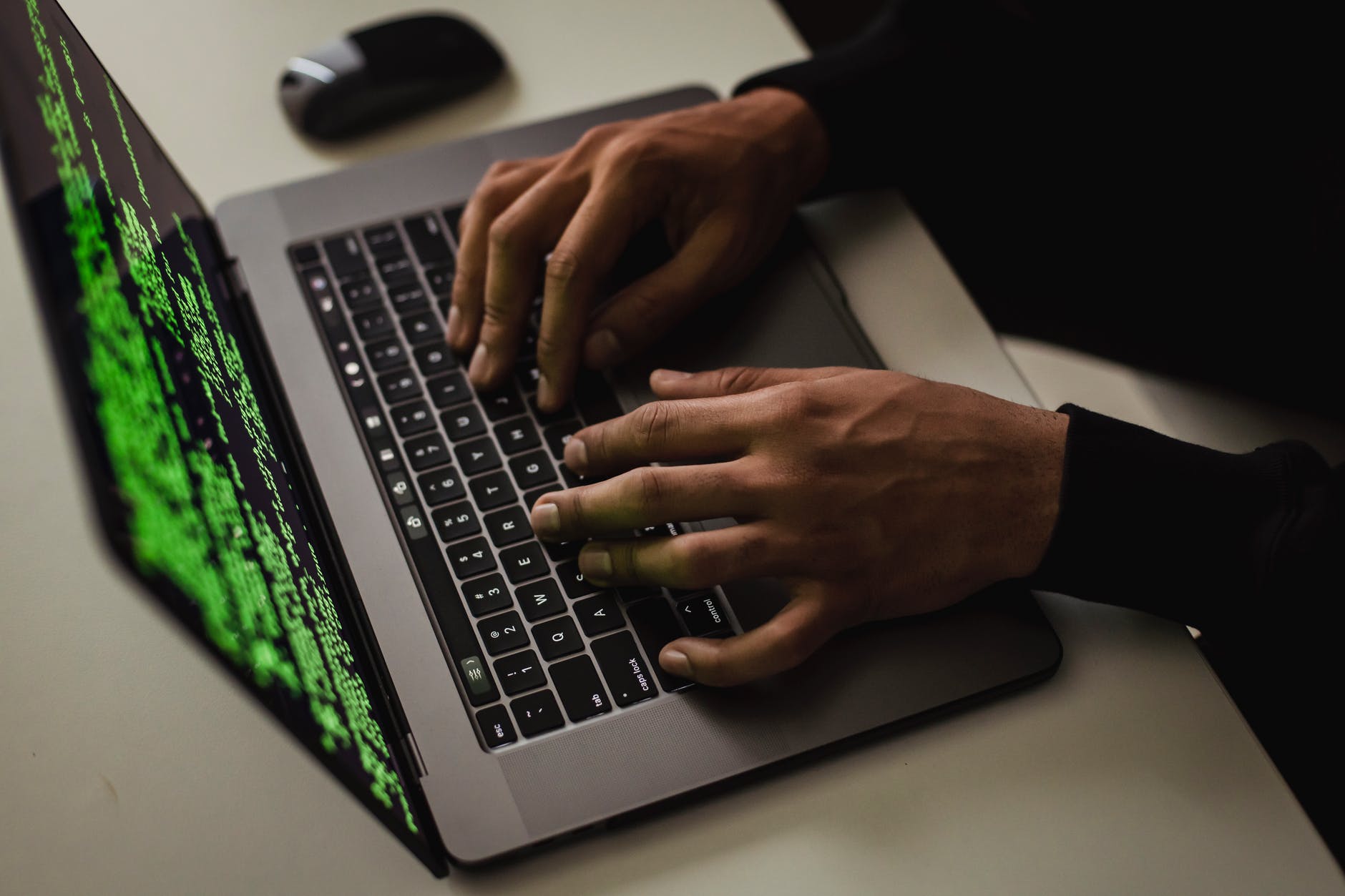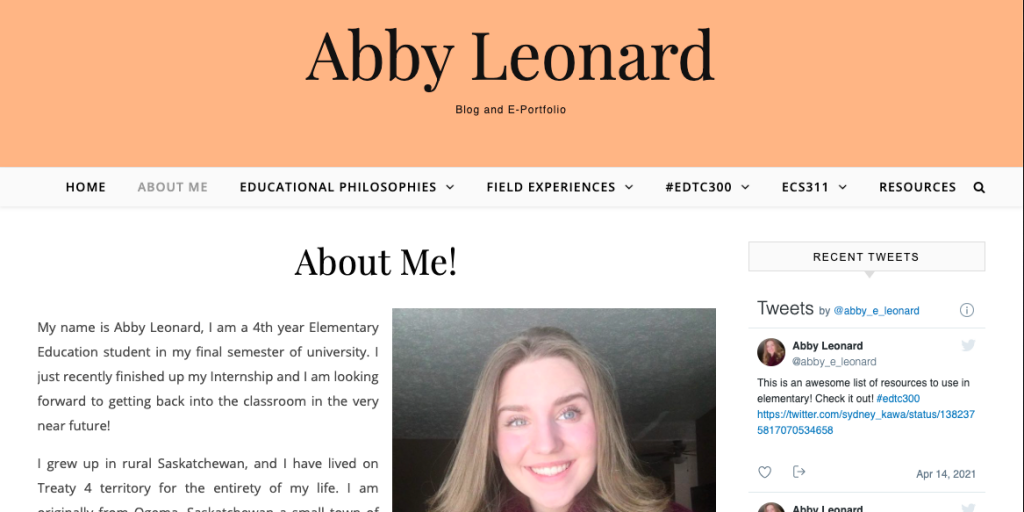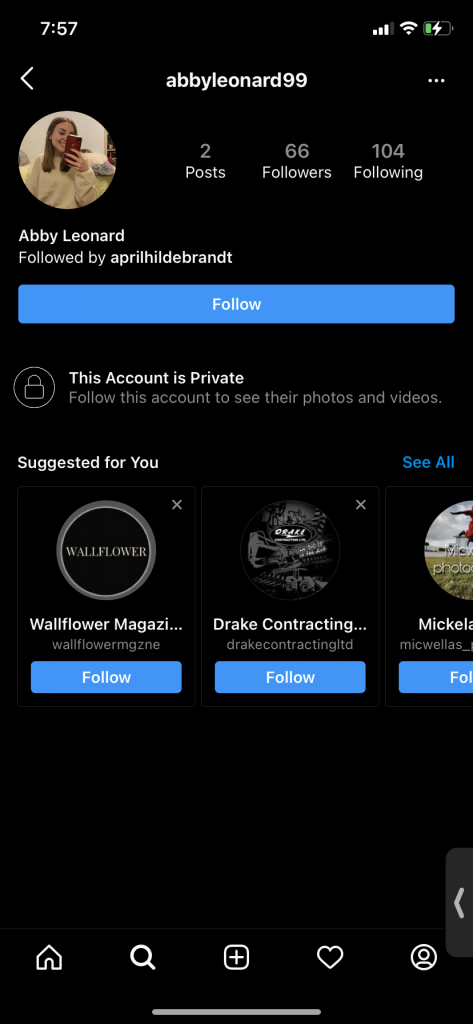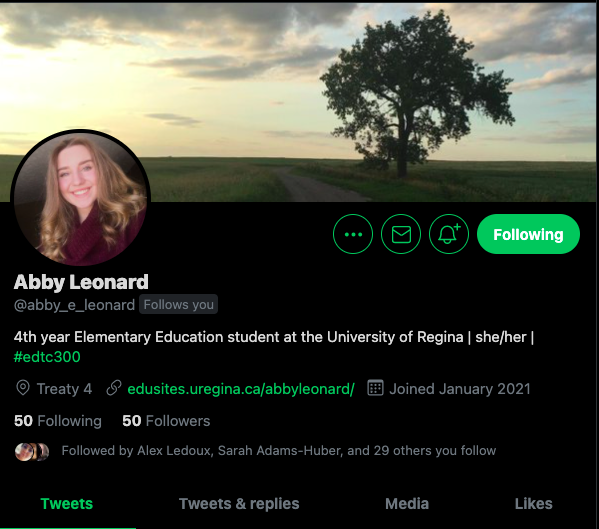Undercover on the Internet

This week we were asked to cybersleuth one of our EDTC 300 classmates. I choose to pair with Abby Leonard. Since I knew her already, I was able to find some of her social quite easily. I follow her on twitter so I started there.
If I could not find her through twitter, I would went through mutual friend accounts to find her account. From her twitter, I was able to access her blog. I loved exploring her blog, as I went through her learning project and weekly blog posts.

Google Search
After getting to her blog, I ran into a wall in finding anymore information or social media about her. So I went with what I knew and did a google search of her name. There are a LOT of Abby Leonards! I decided to put Saskatchewan after her name to limit the search. This way I was able to find her Facebook account. Her Facebook seemed to be very plain and did not have any more information about her.

Other Social Media
After I am done exploring google and not being able to find anymore social media or other information, I decided to search other social media, such as Instagram and Tik Tok. I was only able to find her Instagram, but I do not follow her so I was not able to access her account.

Digital Identity
Abby had a digital identity that demonstrated her as a professional teacher. However, I did not see much about her other interests, other than the about me page and her learning project on her blog. I personally do not have much of a digital identity either, so I completely understand having a limited amount of information about yourself on the internet. I learned from a young age that anything you post about yourself will stay on the internet forever, and that made me very wary of posting anything. An example of how sometimes when you post something on the internet, it can get mislead and over blown is the case of Justine Sacco. Jon Ronson covers the story of Sacco’s tweet in his Ted Talk.
Justine did not mean her post to be racist, as Ronson interviewed her and she stated that she meant it as a dig at the bubble of living in America has created. For me, this reminds me that I need to be careful and mindful of what I put. I want my digital identity to represent myself and my values I have as an educator.
I read the heartbreaking story of Madison Holleran. She posted on social media consistently, but it did not show what was really happening in her life. She was posting about her family, her hobbies and parties that showed her being happier then she truly was. To me this demonstrates that digital identity can not always be truthful to how a person truly is. We can see this also through the beauty standards that are reinforced by photoshop and filters. Although, I do understand trying to make yourself look nice, but this can create unrealistic standards for individuals exposed to those posts. I think that creating a digital identity can be whatever you want, but we need to educate students that not everything is truthful and what it seems to be.
